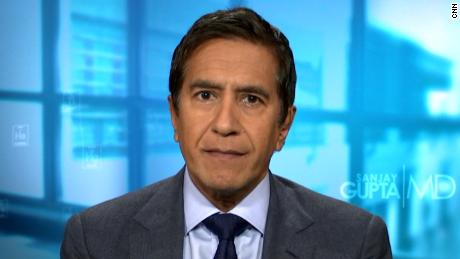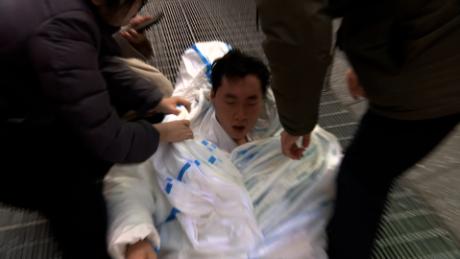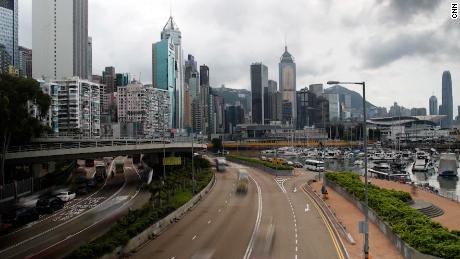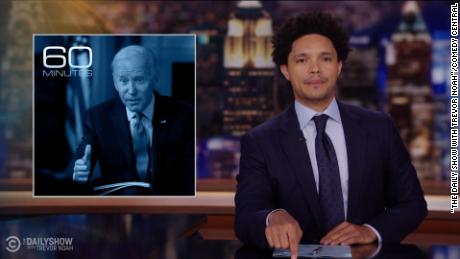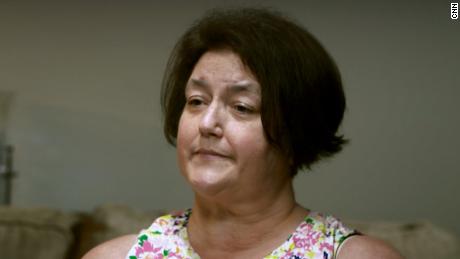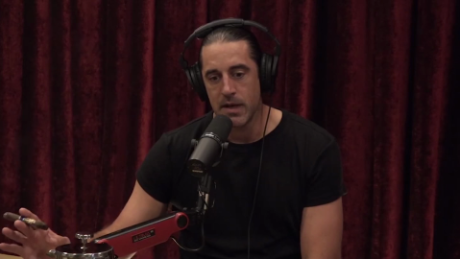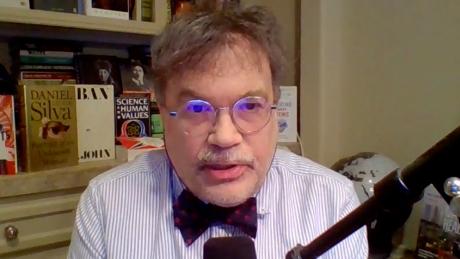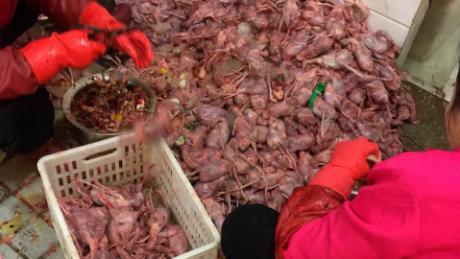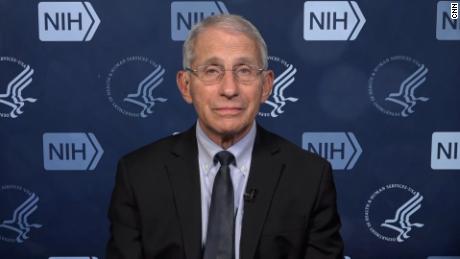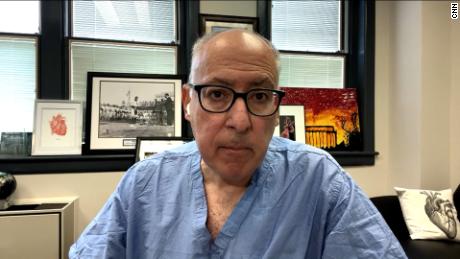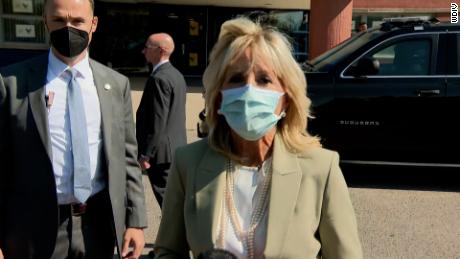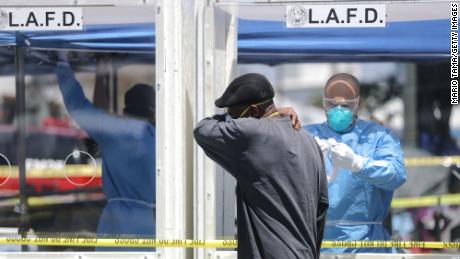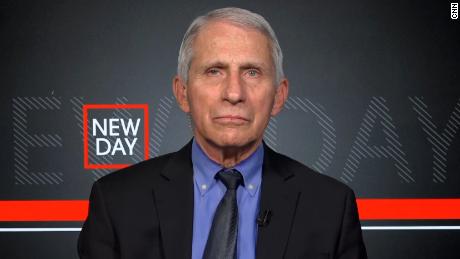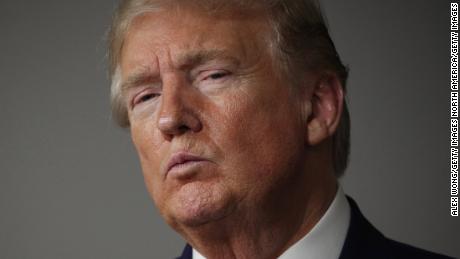John Avlon is a senior political analyst at CNN. The opinions expressed in this commentary are his own. View more opinion on CNN.
(CNN)Politicians were feeling pressure during the pandemic. Businesses were agitating to reopen and deaths were going down, especially far away from the coastal cities that it had hit worst, first. It seemed time to declare "mission accomplished" and get the economy humming again -- especially with an election looming.
It was 1918 and Denver Mayor William Fitz Randolph Mills bowed to business leaders and decided to back off social distancing. Armistice Day seemed like a perfect day to do it. The city had been all but locked down for five weeks and now there was something worth celebrating -- the end of the First World War. Grateful citizens streamed into the streets of the city on November 11, 1918, soon after Denver's Manager of Health William H. Sharpley declared the "plague under control!"
His enthusiasm was premature but understandable: Denver officials could point to progress in containing the disease at that time, compared with other cities like Chicago. Their first recorded influenza-related death had been on September 27, when a student from University of Denver named Blanche Kennedy died of pneumonia after visiting Chicago.
Denver moved quickly, shutting down indoor gatherings after church on October 6. Nonetheless, by October 15 there were 1,440 cases in a city of a quarter million but only 300 doctors.
Even in those early days of public health, with limited scientific remedies, social distancing and masks were understood to help stem the tide of pandemic. In the town of Montrose, Colorado, as the Denver Post recounted, a health officer named Isaiah Knott warned his fellow citizens that "if you are sick and do not stay away from social gatherings, you have the heart of a hun," using a derogatory term for the Germans the US was fighting at the time. But superstition often overwhelmed science, as officials recommended that people avoid wearing tight shoes and recommended people have a "clean mouth, clean heart and clean clothes." Quack "cures" proliferated, peddling their wares to the gullible and the desperate, as we see today in all kinds of coronavirus scams and pseudo science. (Check out this Reality Check with all the sordid details).
While some experts tried to calm fears by saying the Spanish influenza epidemic was "ordinary influenza by another name," according to John Barry, the author of the book "The Great Influenza," by the end of the pandemic, an estimated 675,000 Americans died, primarily in the fall of 1918, according to the Centers for Disease Control and Prevention.
But folks were bristling at being asked to stay indoors in the picturesque autumn and businesses -- especially movie theaters -- were irritated at losing so much money because of what seemed like a relatively isolated pandemic. They argued it was better to simply quarantine those who showed symptoms and let everyone else go about their business.
There's an obvious echo to the pressures politicians are feeling today -- especially in states like Georgia, where Gov. Brian Kemp seems more intent on playing to the base than listening to scientists. He was late to the lockdown and now wants to open up early. But then again, he's the same governor -- of the CDC's home state -- who said it was news to him that asymptomatic people could spread the disease, two months after it was common knowledge.
Another pattern in past pandemics is trying to scapegoat immigrants and vulnerable communities for spreading the disease. Immigrants, the poor and Native American tribes were being accused of spreading the disease across Colorado. Despite the name Spanish flu the disease is believed to have begun at US Army Camp Funston in Kansas earlier that year before spreading across the world, killing an estimated 50 million, including members of my family. Wealthy socialites flouted social distancing requirements with little recourse. It seemed better to back off the draconian measures and just focus on precautions while stigmatizing the sick, placing placards on the houses where there had been a case of influenza.
This may have sounded reasonable at the time, but it did not have the intended result.
Instead of being at the end of the influenza's toll on Denver, the city was only halfway through its ordeal. By backing off social distancing too early, they utterly failed to flatten the curve, and suffered a second bump, as this graph of cities by National Geographic shows.
By November 22, deaths were spiking and Denver officials scrambled to reinstate bans on public and private gatherings and requiring masks for all commerce.
But the damage had been done. Five days later, Denver Post headlines blared the bad news: "All Flu Records Smashed in Denver in Last 24 Hours," claiming that more Denver residents had died of influenza than Coloradans killed in the First World War.
That didn't stop business owners from marching on City Hall, protesting that they were losing tens of thousands of dollars a week, similar to the protests we've seen around the country over restrictions to help flatten the Covid-19 curve.
'Unseen Enemy: Pandemic'
CNN Films' documentary explores how diseases like Zika, Ebola and influenza spread. Watch now on CNNgo.
In 1918, cases spread throughout the state of Colorado, as some schools reopened in mid-November, ultimately claiming more deaths per capita in Colorado than the national average.
Then, as now, the rolling nature of pandemics affected cities first and more remote and rural areas later. In the end, 8,000 people in Colorado died, but the towns that socially isolated consistently, like Gunnison, did far better than Denver.
Premature declarations of victory guarantee defeat. Buckling to protests increased the number of dead.
Get our free weekly newsletter
Sign up for CNN Opinion's new newsletter.
But the protesters a century ago did not have the advantages of precedent or modern science to learn best practices. We do now, which makes the protesters who are projecting their partisan paranoid-style politics on the pandemic look like members of the flat earth society competing to win the Darwin Awards. It's worse, of course, that the President of the United States is encouraging them against the advice of his own scientific experts.
As Harry Truman said, "The only thing new in the world is the history you don't know." Public health is among the most difficult government actions -- when actions work they seem like overreactions. What's unforgivable is for leaders to remain willfully ignorant of history and therefore doomed to repeat it. Their weak-kneed decisions could result in the death of someone you love.
Note: An earlier version referred to the University of Denver as Denver University.


